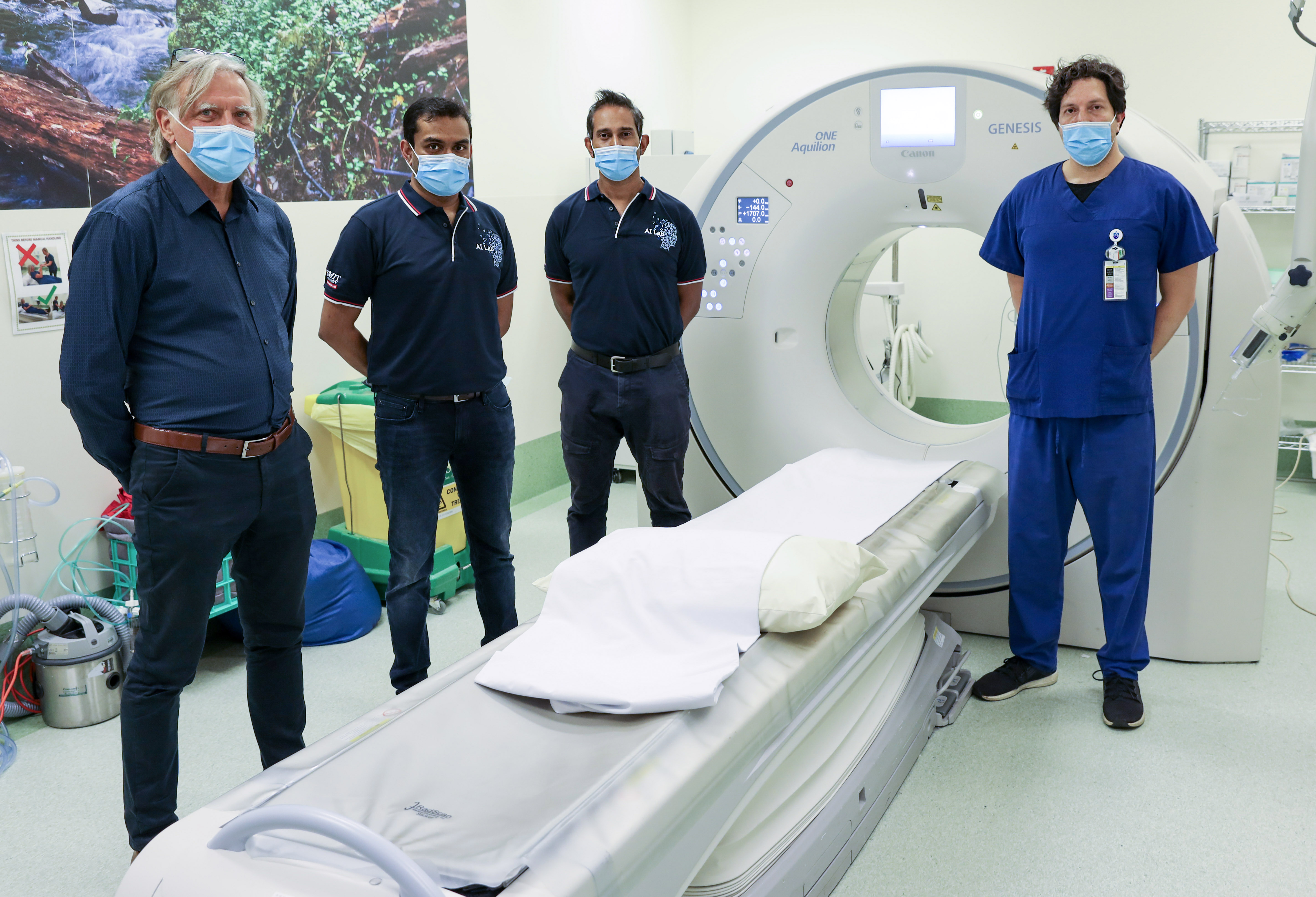New AI tech for early detection of prostate cancer

Pictured: Associate Professor Peter Brotchie (St Vincent’s), Dr Ruwan Tennakoon (RMIT), Professor John Thangarajah (RMIT), Dr Mark Page (St Vincent’s)
Researchers from St Vincent’s Hospital Melbourne and RMIT have developed a diagnostic tool that can spot prostate cancer before patients have any symptoms, using artificial intelligence to analyse CT scans in just seconds.
The tech, developed in collaboration with clinicians at St Vincent’s Hospital Melbourne and RMIT, works by analysing CT scans for tell-tale signs of prostate cancer, something even a well-trained human eye struggles to do.
RMIT’s Dr Ruwan Tennakoon said CT scans were great for detecting bone and joint problems but even radiologists struggled to spot prostate cancers on the images.
“We’ve trained our software to see what the human eye can’t, with the aim of spotting prostate cancer through incidental detection,” he said.
Early detection is key
Prostate cancer is the most diagnosed cancer and a leading cause of death by cancer in Australian men.
Early detection is key to successful treatment but men often dodge the doctor, avoiding diagnosis tests until it’s too late.
Dr Mark Page, Head of CT in Diagnostic Imaging at St Vincent’s Hospital Melbourne, said early intervention for prostate cancer was key to a better health outcome.
“Australia doesn’t have a screening program for prostate cancer but armed with this technology, we hope to catch cases early in patients who are scanned for other reasons,” he said.
“For example, emergency patients who have CT scans could be simultaneously screened for prostate cancer.
“If we can detect it earlier and refer them to specialist care faster, this could make a significant difference to their prognosis.”
How it works
For the study, published in Nature’s Scientific Reports, researchers from RMIT and St Vincent’s Hospital Melbourne studied CT scans of asymptomatic patients, with and without prostate cancer.
The team trained the AI software to look for features of disease in a variety of scans and where exactly to look for them, avoiding the need to manually crop the images.
The AI performed better than radiologists who viewed the same images, detecting cancerous growths in just seconds.
What’s more, the AI improved with each scan, learning and adapting to read images from different machines to spot even the smallest irregularities.
RMIT’s Head of Artificial Intelligence, Professor John Thangarajah, said the study demonstrated how AI can and should be used to create public good.
“Our health sector needs smarter solutions and AI can help, but we're only scratching the surface,” he said.
The technology can be applied at scale, potentially integrating with a variety of diagnostic imaging equipment like MRI and DEXA machines – pending further research.
‘Incidental detection of prostate cancer with computed tomography scans’, with Steven Korevaar, Ruwan Tennakoon, Mark Page, Peter Brotchie, John Thangarajah, Cosmin Florescu, Tom Sutherland, Ning Kam and Alireza Bab-Hadiashar, is published in Scientific Reports (DOI: 10.1038/s41598-021-86972-y).